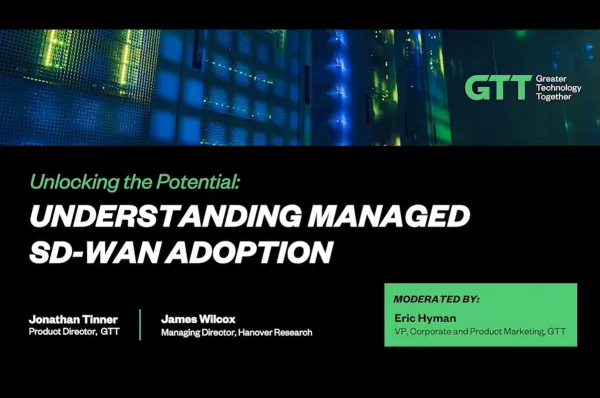Appreciation for the strategic importance of DDoS mitigation tools is crucial for understanding how to safeguard networks against disruptive cyberattacks.
Visualizing the journey, including the 7 steps needed to ensure protection and mediation from DDoS attacks and avoiding those attacks complete is helpful to understanding the steps and infrastructure for deploying a DDoS mitigation solution, From MPLS with SSE tools or within a full-blown SD-WAN architecture with SASE protection across your risk landscape, DDoS protection, along with firewall, is a critical security solution to avoid downtime or any disruption to your network that could affect your business – from reputation damage to financial implications.
Network infrastructure and application-layer attacks are becoming more frequent, with large-scale attacks occurring daily. Ensure continuous operations and safeguard your business with GTT's comprehensive DDoS mitigation solution, designed to protect your most critical assets.
Investing in a robust DDoS protection service puts security experts at the forefront of your network defense, helping to prevent disruptions and ensure your business operates efficiently.
DDoS attack prevention offers:
- Comprehensive protection strategies – It outlines key steps for identifying, mitigating, and preventing DDoS attacks, helping organizations maintain operational continuity.
- Industry expertise – GTT specializes in network security and infrastructure, making its insights valuable for businesses seeking proven, effective defense mechanisms.
- Business impact awareness – DDoS attacks can cause financial loss, reputational damage, and service disruptions. The content helps stakeholders grasp the risks and plan appropriate responses.
- Actionable mitigation framework – The document likely provides structured approaches for responding to attacks in real time, reducing downtime and minimizing damage.
- Alignment with security best practices – Understanding GTT’s methodology helps IT teams ensure their defenses align with recognized cybersecurity standards.
- Safety from emerging threats – Attack techniques are evolving, including AI-driven botnets and multi-vector assaults targeting application-layer vulnerabilities.
- Protection from industry-specific vulnerabilities – Tailor messaging to different sectors (e.g., healthcare, finance, retail) to highlight how DDoS affects compliance, customer trust, and service availability.
- Safeguarding against negative financial & operational Impact
- Protects regulatory compliance – For industries governed by data protection laws (HIPAA, PCI DSS, GDPR), preventing DDoS attacks is essential for maintaining legal compliance.
- Proactive threat intelligence –real-time analytics and automated mitigation ensure resilience before an attack scales.
Seven steps to predict, avoid and mitigate a DDoS attack are:
- Have a plan
- Understand your traffic
- Designing resilient architecture
- Implement redundancy
- Early identification
- Having an expert partner
- Strategic, frequent testing

 EN
EN







